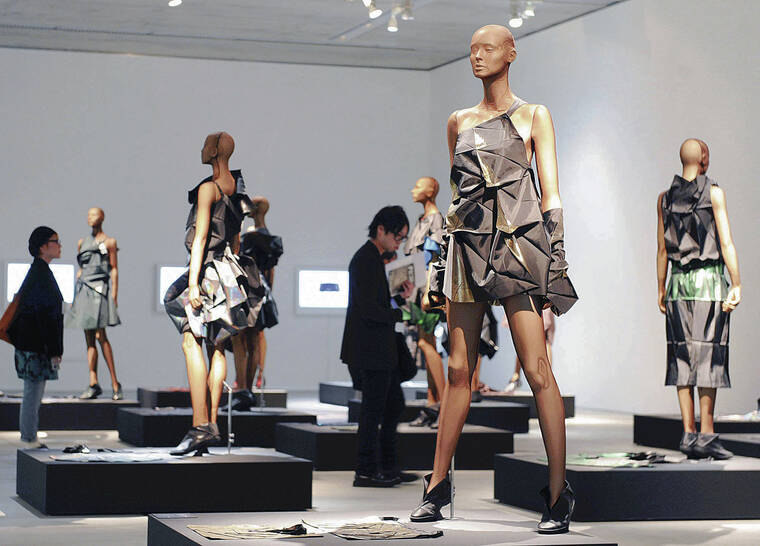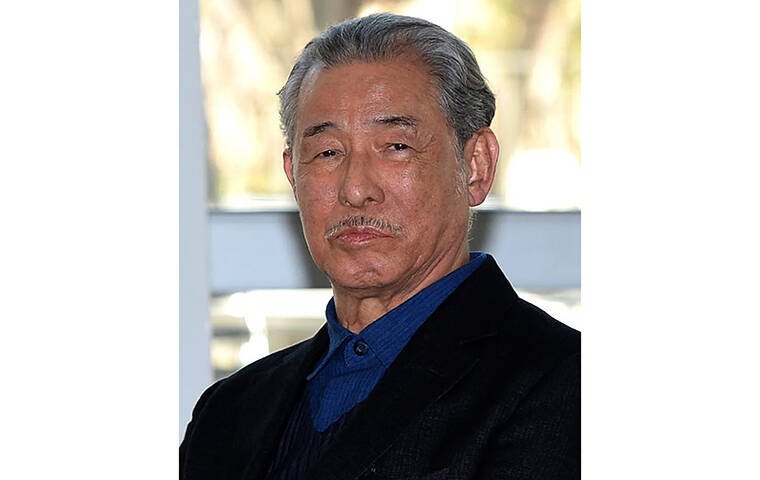Issey Miyake: Fashion designer, survivor, icon

JAPAN NEWS-YOMIURI
Fashion designer Issey Miyake, who died Aug. 5 was a survivor of the bombing of Hiroshima. His fashion collections often featured pleats, and this one from 2010 was made from recycled fabric.

KYODO NEWS VIA AP
Fashion designer Issey Miyake, who died Aug. 5 was a survivor of the bombing of Hiroshima.


TOKYO >> Issey Miyake, who died Aug. 5 at 84, grew up in Hiroshima. As a high school student, he was immensely moved by the beauty of the handrails of the Peace Bridge near ground zero of the atomic bombing in the city. The handrails were designed by sculptor Isamu Noguchi. “It made me aware of the power of design that can give people encouragement,” Miyake later said.
Miyake was a hibakusha — an atomic bomb survivor — as a 7-year-old boy. Yet he rarely spoke of his wartime experiences.
“I don’t want to be called a pikadon designer, and it would be pathetic to make the atomic bombing an excuse,” he once said. “Pikadon” is a Japanese slang term for the atomic bomb.
However, in December 2015, the 70th anniversary of the end of World War II, Miyake told the Japan News-Yomiuri of his experiences as a hibakusha.
“If someone like me, who has symptoms from the bombing, speaks out now, then things may start to change in society, however little,” he said, explaining why he had decided to talk about the experience. He was likely concerned that the number of people who could share their war experiences was decreasing each year and that memories of the war were at risk of being forgotten.
Miyake prepared for the interview, searching for photos. He recalled walking alone to his home, 1.5 miles from ground zero, on Aug. 6, 1945, to find his mother, and how as a 10-year-old he nearly died after developing periostitis, an inflammation of connective tissue surrounding the bone, as a result of the bombing. At times he became teary during the three-hour discussion, sharing what he had kept locked in his heart.
Don't miss out on what's happening!
Stay in touch with breaking news, as it happens, conveniently in your email inbox. It's FREE!
Miyake did not expect to live long, but when he got into fashion design as a student, he found something to live for. From the 1970s he delivered his one-of-a-kind designs to the world, featuring Japanese material and craftsmanship combined with the latest technologies.
“A designer is someone who proposes outfits that reflect the time, society and people’s needs,” Miyake said.
Original designs born out of one piece of fabric, pleated attire that could be washed at home, outfits made from sustainable materials, clothes in vivid colors — the works he produced struck a chord with people across the globe.
His designs shared brightness and hope, perhaps created in counterpoint to the deep pain of his wartime experiences.
In 2016 a large-scale retrospective of Miyake’s work was held at the National Art Center in Tokyo.
“How will people’s lives change in the future? It’s no good to rehash something that existed before. I’d be happy if I can produce beauty many people will really need, invaluable beauty that remains in your memory,” he said.
His desire to make clothes for the next era never waned.



